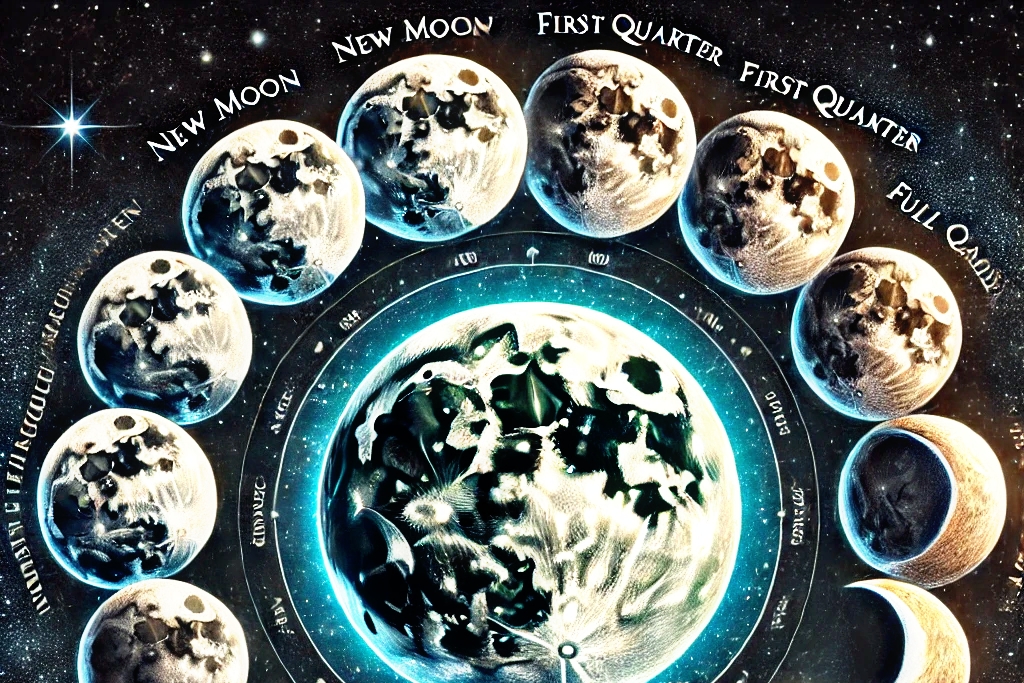The Moon, Earth’s natural satellite, has fascinated humanity for millennia with its enchanting glow and cyclical phases. These lunar phases not only captivate skywatchers but also play a significant role in cultural traditions, scientific studies, and even biological rhythms. From ancient calendars to modern space exploration, the Moon’s phases have left an indelible mark on human history and science. This article delves deep into the concept of lunar phases, exploring their science, cultural significance, and the mysteries that continue to inspire curiosity.
What Are Lunar Phases?
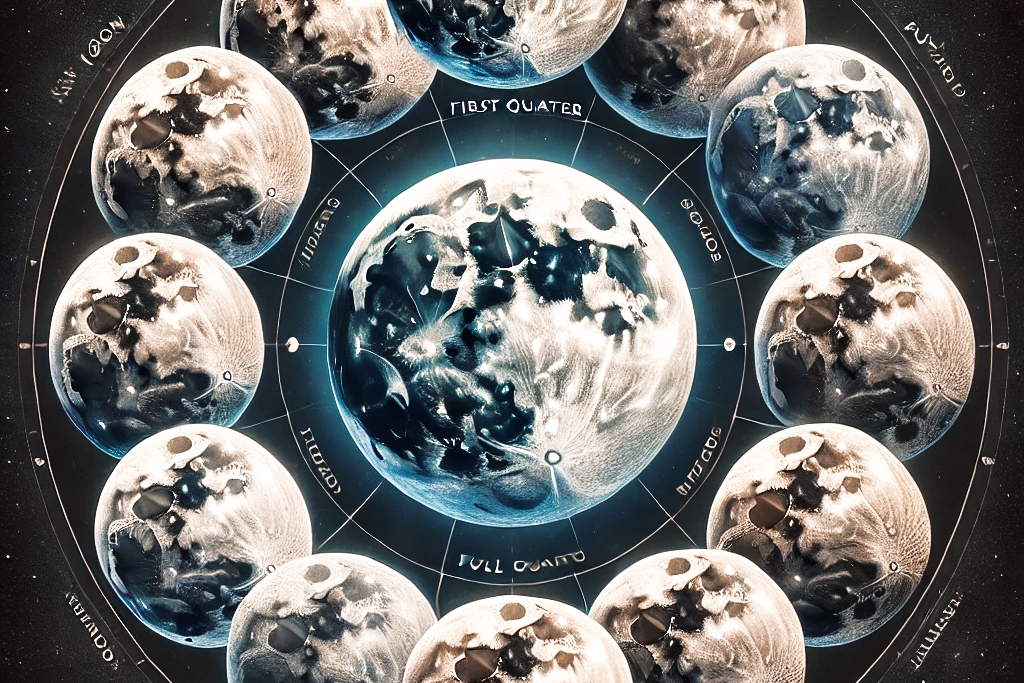
Lunar phases refer to the changing appearances of the Moon as seen from Earth, caused by its orbit around our planet and the interplay of sunlight. The Moon doesn’t emit light on its own; instead, it reflects sunlight. As the Moon travels in its elliptical orbit, the portion of its surface illuminated by the Sun changes, giving rise to the phases we observe.
These lunar phases follow a predictable cycle, called the lunar month or synodic month, which lasts approximately 29.5 days. This cycle is divided into eight primary phases:
- New Moon
- Waxing Crescent
- First Quarter
- Waxing Gibbous
- Full Moon
- Waning Gibbous
- Last Quarter (Third Quarter)
- Waning Crescent
Each phase marks a different stage in the Moon’s journey around Earth, creating a celestial clock that has guided human activities for thousands of years.
The Science Behind Lunar Phases
The lunar phases occur because of the Moon’s position relative to Earth and the Sun. Here’s how it works:
- The Moon is always half-lit by the Sun. However, from Earth, we see varying portions of this illuminated side depending on the Moon’s location in its orbit.
- The Moon’s orbit is not a perfect circle but an ellipse, causing slight variations in its speed and distance from Earth.
- The angle at which sunlight strikes the Moon also contributes to its phases, as different parts of the illuminated surface become visible from Earth.
To fully understand lunar phases, one must consider two key aspects of the Moon’s movement:
- Orbit: The Moon takes about 27.3 days to complete one orbit around Earth, known as the sidereal month. However, since Earth is also moving around the Sun, it takes about 29.5 days for the Moon to realign with the Sun and return to the same phase.
- Tilt: The Moon’s orbit is tilted about 5 degrees relative to Earth’s orbital plane, preventing solar and lunar eclipses from occurring during every cycle.
The Eight Phases of the Lunar Cycle
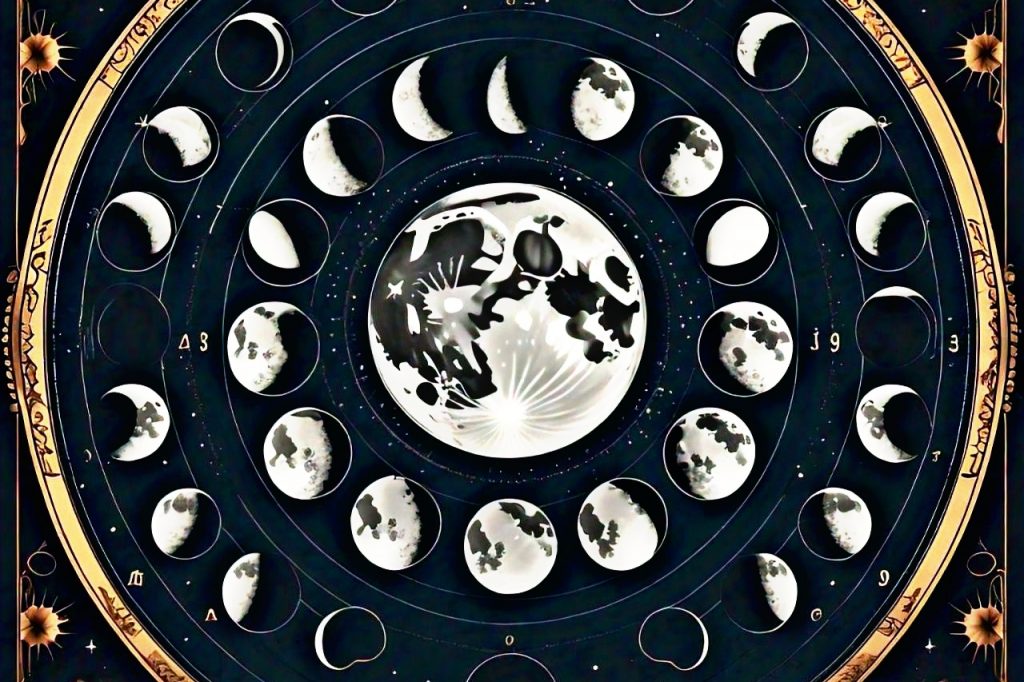
1. New Moon
The new moon occurs when the Moon is positioned between Earth and the Sun. During this phase, the Moon’s illuminated side faces away from Earth, making it invisible to the naked eye.
Cultural Significance: In many cultures, the new moon marks the beginning of a new month in lunar calendars. It is a time for fresh starts and new intentions.
2. Waxing Crescent
As the Moon moves slightly away from the Sun’s position, a small sliver of light becomes visible. This phase is called the waxing crescent, where “waxing” indicates growth.
Cultural Significance: The waxing crescent is often associated with hope and progress. It symbolizes the gradual build-up of energy and momentum.
3. First Quarter
When the Moon has completed one-quarter of its orbit, it reaches the first quarter phase. At this point, half of the Moon’s surface is illuminated, creating a striking half-moon shape.
Cultural Significance: The first quarter is a time for decision-making and action in various traditions. It’s seen as a moment of balance and challenge.
4. Waxing Gibbous
As the Moon continues to wax, more than half of its surface becomes illuminated, creating the waxing gibbous phase. This phase leads up to the full moon.
Cultural Significance: This phase symbolizes refinement and preparation. It’s a period of building energy and anticipation.
5. Full Moon
The full moon is the most celebrated phase, occurring when the Earth is positioned between the Moon and the Sun. The entire illuminated side of the Moon is visible, bathing the night in its brilliance.
Cultural Significance: Across cultures, the full moon represents completion, abundance, and illumination. Festivals like the Mid-Autumn Festival and religious observances like Guru Purnima align with this phase.
6. Waning Gibbous
After the full moon, the illuminated portion begins to decrease, entering the waning gibbous phase. The term “waning” indicates a reduction in light.
Cultural Significance: This phase is often associated with gratitude and reflection, as the energy of the full moon subsides.
7. Last Quarter (Third Quarter)
When the Moon completes three-quarters of its orbit, it reaches the last quarter phase. Once again, half of the Moon’s surface is illuminated, but on the opposite side compared to the first quarter.
Cultural Significance: This phase represents release and letting go. It’s a time to focus on eliminating obstacles.
8. Waning Crescent
The waning crescent marks the final phase before the cycle restarts. Only a thin sliver of light remains, heralding the approach of the new moon.
Cultural Significance: This phase symbolizes rest and introspection, encouraging people to recharge before new beginnings.
Lunar Phases and Their Influence on Earth
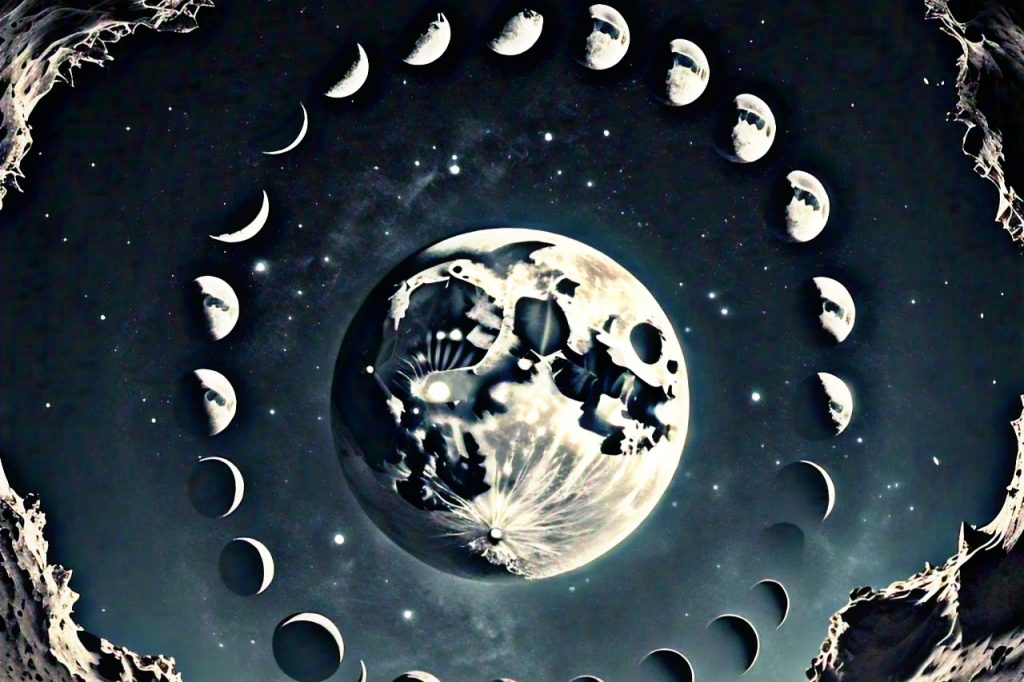
The lunar phases impact various natural phenomena, including tides, animal behavior, and even human activities.
1. Tides
The gravitational pull of the Moon is a primary driver of ocean tides. During the new moon and full moon, the Sun, Earth, and Moon align, creating spring tides with higher highs and lower lows. Conversely, during the first and last quarter, neap tides result in less pronounced tidal differences.
2. Animal Behavior
Many species, including marine organisms and nocturnal predators, are influenced by lunar phases. For instance, coral spawning often aligns with the full moon, and certain bird migrations are timed with moonlit nights.
3. Human Activities
Throughout history, humans have used the Moon as a natural calendar. Agricultural practices, fishing schedules, and cultural ceremonies have often been tied to the lunar phases.
Cultural and Mythological Significance
The lunar phases have inspired myths, legends, and rituals in cultures around the world.
- Ancient Calendars: The Islamic Hijri calendar and the Hebrew calendar are examples of lunar-based timekeeping systems.
- Mythology: In Greek mythology, Selene, the goddess of the Moon, was believed to drive a chariot across the night sky. Similarly, in Hindu mythology, the Moon (Chandra) is considered a deity associated with emotions and time.
- Festivals: Celebrations like the Chinese Mid-Autumn Festival and Hindu Karva Chauth are timed with specific lunar phases.
Modern Exploration of Lunar Phases
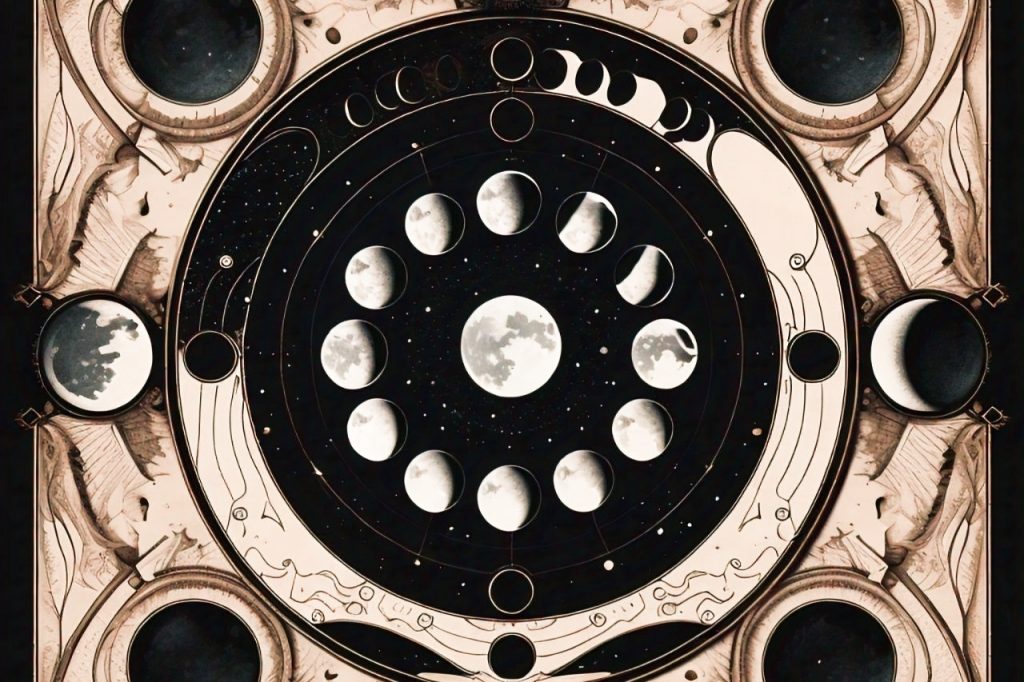
Today, the study of lunar phases extends beyond cultural appreciation to scientific inquiry. Astronomers use advanced telescopes and spacecraft to study the Moon’s surface and its interaction with Earth. Space agencies like NASA and private organizations have planned missions to harness the Moon’s resources, with an understanding of lunar phases aiding in mission planning.
Conclusion
The lunar phases are more than just a celestial spectacle; they are a profound connection between Earth and its only natural satellite. Their influence spans science, culture, and daily life, serving as a reminder of the intricate dance of celestial bodies. As humanity continues to explore the mysteries of the Moon, the timeless beauty of its phases remains a source of inspiration and wonder.
Whether guiding ancient sailors, inspiring poets, or influencing scientific discovery, the lunar phases embody the ever-changing yet constant rhythms of the universe.

